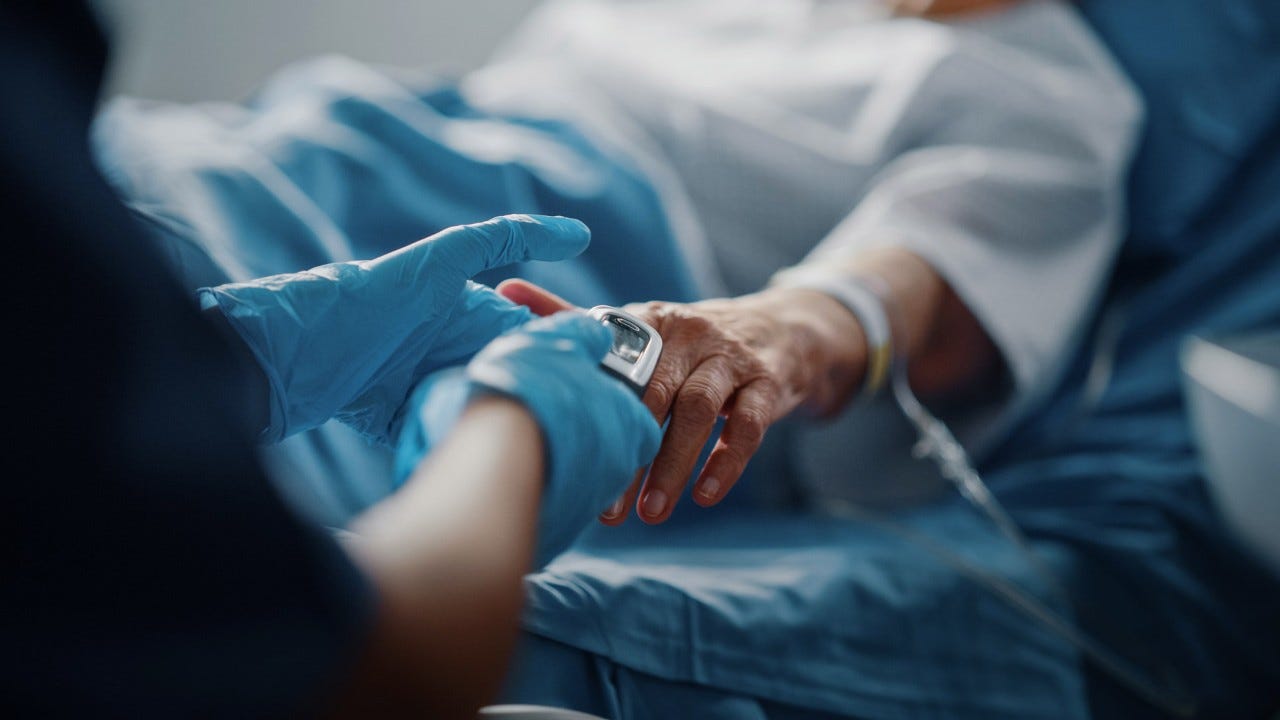Cholesterol: the all-rounder produced by your body
Some substances in our body are responsible for a wide range of functions. Cholesterol is one of these. It is an important building block with “good” and “bad” sides.

In Switzerland, around 12 out of 100 people are diagnosed with high cholesterol at some point in their lives. “High cholesterol” refers to the value of total cholesterol in the body. Alongside blood sugar, it is probably the most frequently measured blood value in Switzerland. High cholesterol increases the risk of cardiovascular disease and arteriosclerosis. The latter is a vascular disease in which the arteries constrict or harden due to pathological deposits, with possible consequences such as a heart attack or stroke.
What is cholesterol?
First of all, you can’t have a healthy organism without cholesterol. This fat-like substance circulates in the blood and is mostly needed for fat metabolism. However, cholesterol is also an essential building material for the body as it is an important component of every cell wall and increases its elasticity. Cholesterol is also involved in the production of hormones and vitamins, and transports substances in and out of the cells, for example for metabolism. More recent studies show that the body also uses cholesterol to produce heart-strengthening messenger substances. Cholesterol is produced by the liver itself, but it is also absorbed through our diet.
If there is too much cholesterol in the blood, this is called high cholesterol or, to use the medical term, hypercholesterolemia – that is, more than 140 grams of cholesterol, which is roughly equivalent to the weight of an apple. There are two types of cholesterol – one “good” and one “bad”.
HDL and LDL: good and bad cholesterol
As fats aren’t soluble in water, some means of transportation is needed to carry them in the blood. This is the job of lipoproteins (fat and protein). Two types of lipoproteins are relevant when it comes to cholesterol:
- High-density lipoproteins, also known as HDL cholesterol, are considered “good” cholesterol. They transport excess cholesterol back to the liver and protect against arteriosclerosis.
- Low-density proteins, also known as LDL cholesterol, are considered “bad” cholesterol. They transport the cholesterol from the liver to the cells. In excess, LDL cholesterol is harmful to the body. If too much LDL cholesterol remains in the blood, it is deposited on the inner walls of the arteries. This leads to arteriosclerosis with risks for the heart and blood vessels.
What causes high cholesterol?
Generally speaking, the ratio of total cholesterol to “good” HDL should not exceed a value of 4:1. This ratio can be disturbed by an unbalanced, high-fat diet, obesity, high blood pressure, diabetes, stress and a lack of micronutrients and exercise. Illnesses or genetic factors can also play a role in driving blood lipids up.
In genetic familial hypercholesterolemia, on the other hand, defective genes disrupt fat metabolism from a young age. However, cholesterol levels are much more likely to increase as we get older. In this case, they are referred to as acquired forms.
High cholesterol: no symptoms
You don’t usually notice if you have high cholesterol. It’s often only discovered with a simple blood test at the doctor’s or in the pharmacy. In addition to cholesterol, triglycerides are also examined. These are a type of fat or lipid that circulates in the blood. They play a role in the risk assessment of vascular diseases. Like cholesterol, triglycerides are also transported in the blood by lipoproteins.
The symptoms resulting from high cholesterol only occur through consequential damage to narrowed or hardened arteries, which lead to circulatory disorders, such as a narrowing of the coronary arteries (angina pectoris) or, if the vessel is blocked, to a heart attack or a stroke.
How can you lower high cholesterol?
Early treatment can help prevent a heart attack or stroke. From the age of 40, you should have your cholesterol levels checked regularly. “It’s best to have them checked every two to five years,” says Dr Marc Jungi, a specialist in internal medicine at Sanacare.
As well as adjusting your lifestyle and diet, cholesterol-lowering drugs, known as statins, play a preventive role. They inhibit the formation of cholesterol in the body. A positive side-effect is that statins are also anti-inflammatory and help prevent vascular calcification. Advanced stages of vascular constrictions or blockages can be treated endovascularly, i.e. within a vessel, or surgically.
"The treatment usually takes place in three steps," says Jungi. Step 1: Understand the situation. How is their lifestyle? What about their diet? Do they have any pre-existing health conditions? Are there other risk factors for cardiovascular diseases, such as diabetes, high blood pressure or smoking? Step 2: Analyse potential for improvement. What can the patient do to bring about positive change, for example, adjust their diet, lose weight or do more exercise? Step 3: Let the patient know how they can improve the situation “After the first three steps, patients with a low overall risk potential are given at least six months to turn their situation around. Then their blood values are taken again to check if any progress has been made,” says Jungi.
“1. understand the situation, 2. Analyse the potential for improvement. 3. Let the patient know how they can improve the situation.”
Home remedies and ways to lower high cholesterol
Unfortunately, there is no cure for high cholesterol, but there are many natural ways to address the imbalance in the body. Four important factors:
-
Take micronutrients
There are a number of micronutrients that can have a positive effect on cholesterol levels. All of these medicines are available over-the-counter as dietary supplements in pharmacies and chemists. However, you should always talk to your doctor before taking them. A selection of micronutrients:
- Omega-3 fatty acids: lower LDL, increase HDL, anti-inflammatory
- Vitamin C: lowers homocysteine, helps to repair blood vessels
- Vitamin B3: lowers LDL, increases HDL
- Vitamins B6, B9 & B12: lower homocysteine, protect blood vessels
- Chromium: increases protective HDL
- Copper: increases protective HDL, improves oxygen transport
- Vitamin D: lowers triglyceride, increases HDL
- Coenzym Q10: reduces side effects of medication, improves energy production and the function of blood vessels
- Natural antioxidants: lowers oxidised LDL and minimises vessel damage
- Phytochemicals: For example, flavonoides (e.g. in grapes and green tea) lower oxidised LDL, turmeric inhibits inflammation
Source: naturheilkompass.de
-
Adjust your diet
The body produces 90% of cholesterol itself. There is a widespread misconception that cholesterol is mainly absorbed through food. However, what you eat does contribute to high cholesterol levels. The good news is that even small changes to your diet can have a positive impact on your cholesterol. It’s best to have a 1:1 ratio of omega-6 to omega-3 fatty acids. Both are unsaturated fatty acids that are mainly found in fish, nuts and vegetable oils, such as avocados or olive oil.
In comparison, the ratio of good to bad fats in meat, eggs and milk products from ruminants is not ideal. The reason for this is that they are fed cereal-based concentrates instead of green plants. That’s why it’s advisable to choose organic products when eating animal products.
Industrial fatty acids are another factor in the regulation of cholesterol. These so-called trans fatty acids are mainly found in convenience products, fried and roasted foods or industrially hydrogenated fats such as margarine. These should be avoided wherever possible.
A constant excess of carbohydrates, i.e. cereal-based fillers such as bread, pastries or pasta, is also responsible for numerous negative changes in our metabolism.
Alcohol should be avoided if you have high cholesterol, because it increases both the (bad) LDL cholesterol and triglycerides. And it’s a similar story with coffee, because certain ingredients inhibit enzymes that are required in the liver to break down cholesterol.
Home remedies are available for many health issues. Green tea is an insider tip. It has a wealth of protective properties. It lowers cholesterol levels by inhibiting the enzymes needed to produce cholesterol. Green tea also inhibits the intestinal absorption of fats and impedes the incorporation of cholesterol into the vascular walls, thus counteracting arteriosclerosis.
Soluble fibre in fruit and vegetables has a cholesterol-lowering effect. Apples and pears in particular help break down cholesterol in the intestines. This is particularly evident at breakfast, when the cholesterol stored overnight in the gallbladder is released. If this is not bound by the fibre in the breakfast and then excreted, most of it is returned to the bloodstream. Psyllium husks or oat bran are scientifically proven to help.
-
Daily exercise
The body needs regular, moderate exercise to stay healthy. The recommended 10,000 steps a day are a good guide. Exercising once a week in addition helps lower your body fat levels and significantly increases the good HDL.
Sport also helps prevent cardiovascular diseases, because having a good level of fitness lowers blood pressure. Exercise also helps reduce stress and lift your spirits. Further stress reducers include relaxation techniques, such as yoga, tai chi or muscle relaxation exercises.
Adjusting your diet and exercising regularly will have a positive effect within a short period of time, with changes to the “good cholesterol” noticeable within just ten days.
-
Sufficient sleep
A lack of sleep disturbs the body’s biorhythm and thus influences nutrient intake, fat metabolism and the release of hormones.


